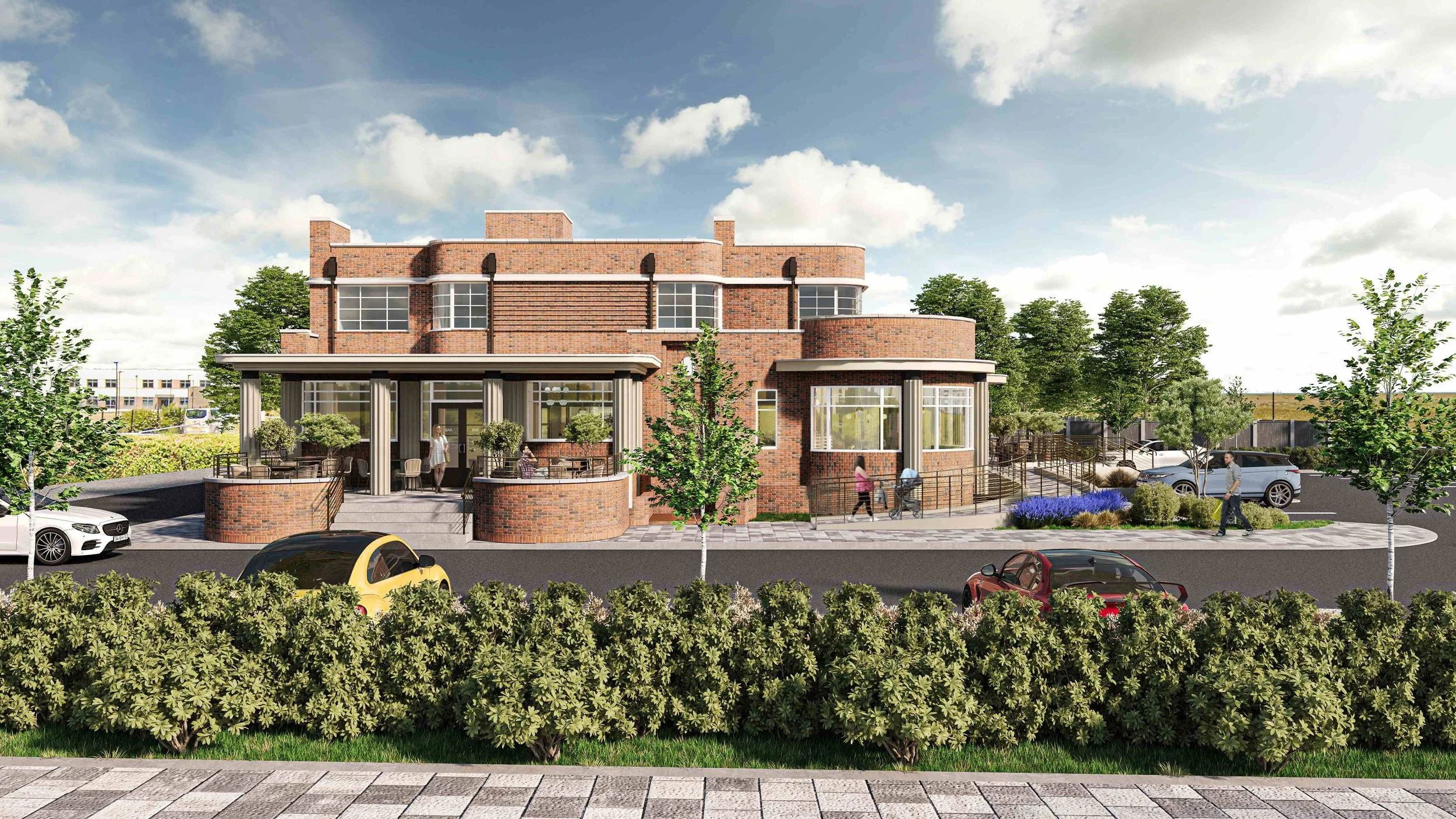Conservation and Renewal
The Iron Duke, Great Yarmouth
CLIENT: Great Yarmouth Preservation Trust
LISTED GRADE II
The Iron Duke, a Grade II listed Art Deco pub, was the work of architect Arthur W. Ecclestone, who was responsible for designing several other notable buildings in the local area including the The Clipper Schooner in Great Yarmouth (1938) and the Never Turn Back in Caister (1956). Construction began in the late 1930s but was halted due to the outbreak of the Second World War. Despite being incomplete, it was granted a licence in 1940 to serve the soldiers manning anti-aircraft guns on North Denes. Building work was completed in 1948.
Burrell Foley Fischer have worked with the Great Yarmouth Preservation Trust, and their commercial partners Zaks, on restoration plans for the pub which has been vacant since 2008. The project, supported with funding from the National Lottery Heritage Fund, will see the stunning art deco building fully and faithfully restored back to how it would have originally looked in its heyday as a beacon of 1930’s modernity.
“We are delighted that the proposals for breathing new life into the Iron Duke have reached this stage. The pub is a key landmark in Great Yarmouth and the council has been pleased to lend its support to GYPT as it worked with heritage partners on such an ambitious vision for the future of the building. We hope the restoration of the pub will once more see residents and visitors able to enjoy and appreciate the Iron Duke.”
On the ground floor Zaks will create a pub in one of the two original bars serving local beers from Lacons Brewery and cocktails with a nod to the 1930’s period. The other bar will become a restaurant where food will be cooked in view of the customers. Both bars will have an art deco aesthetic which has been developed through researching the historic archives and input from conservation paint consultants.
In the past the first floor provided accommodation for the pub manager, this will be repurposed to create two holiday flats helping to ensure that the capital investment will allow a long term viable solution to the currently vacant building. The area around the building will be carefully landscaped and designs will allow access for all.
In addition to the construction and restoration work there will be a range of opportunities for the people to become involved with the project, these include learning traditional building skills, an ongoing photography recording project, workshops centred around food and cooking with an emphasis on local and low cost, a painting scheme to create murals for the hoardings around the site depicting the history of the building and much more.
“This is an extraordinarily exciting project which will see a fascinating and beautiful building brought back to life. It has taken a while to reach this point but the Preservation Trust and Zaks have been careful to ensure that the correct team of professionals and consultants with the level of expertise needed for a project of this complexity were drawn together to bring a successful outcome.
The robust and thorough approach to the development period has left no stone unturned there have been extensive below ground surveys, historic paint analysis, even unexploded bomb surveys. All this work together with the sensitive architectural design work and business planning will help get the building restored and back in use.”




